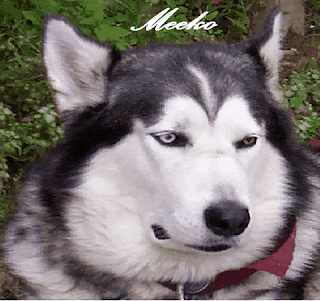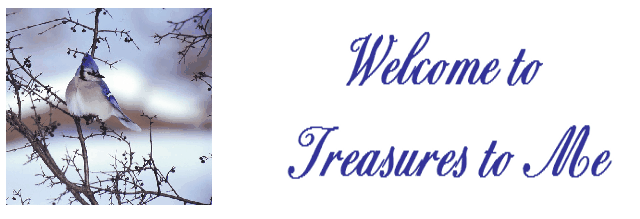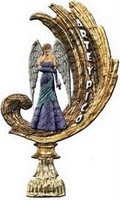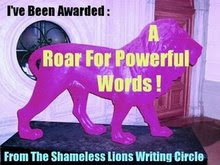A few years ago, I had written this article and posted it on another website. I have updated it to reflect today's statistics on the Spirit Bear, which is a rare species of bear that lives on Canada's west coast. It is a real treasure to both me and my country. I retain copyright to this article.
The legend of the Gitg'at and Kitasoo Native Peoples tells that when the glaciers of the ice age receded, Raven made everything green. He decided to make one in ten black bears white, to remind him of the time when the world was white with ice and snow. Raven set aside an island paradise for these bears - now known as Princess Royal Island. According to the legend, these bears will never leave the island. It was a remote paradise where the bears were to live in peace forever.
Princess Royal Island is covered with pristine rainforest valleys that are blanketed with lush foliage. Hemlock, cedar and 800-year-old Sitka spruce stand tall against the sky. Packs of rare black wolves roam freely and hunt the abundant deer population of the island. Porpoises, elephant seals and Orca whales make the island's channels and coves their home at certain times of the year. It is virtually the paradise that Raven intended it to be. However, "peace forever" is no longer guaranteed. British Columbia's massive logging industry is endangering the "Spirit Bear."
The Kermode Bear
The Spirit Bear is the Kermode bear (Ursa Americanus Kermodie.) It lives in British Columbia's rainforest. This bear is not a cousin of the polar bear, or an albino. It is a sub-species of the black bear. Both parents must have a recessive gene to make the black bear white. One family can consist of both black and white bears.
When it is born, the Kermode bear weights about 1/2 lb. A full grown adult weights up to 300. As with all species, mothers are very protective of their young. They learn to survive by watching her hunt. They stay with her from birth (Jan) until the salmon begin to run in the fall. Kermodes are gentle animals. They will not attack humans unless their cubs are in danger, or they are dying of starvation.
Habitat
The territory of the Kermode is about 7.2 million hectares. They exist in the territory from Princess Royal Island to Prince Rupert Island, Terrace and East Hazelton. Most of the world's Kermode bears are found on Princess Royal Island. The island is also home to salmon, bald eagles, foxes and other animals.
The habitat of the Kermode is in grave danger. Logging companies have set their sights on the lush rainforests of the region. These areas are quickly disappearing. If the logging companies aren't stopped, the rainforests will be gone. If the Kermodes habitat disappears, the "Spirit Bear" will become extinct
The Kermode bear survived the ice age, but today there are less than 400 left in the world. This sub-species of the black bear is clearly in danger of extinction. The three logging giants responsible for 50% of Canada's rainforest logging are destroying the habitat that is critical for the Kermode's survival. In recent years, they have been clear-cutting (the felling and removal of ALL trees from a tract of forest) one acre of ancient forest every 66 seconds. Every remote, untouched, unprotected watershed in the Great Bear forest had been slated for logging within ten years. Clear-cutting causes mudslides, and erosion. It not only destroys the habitat of the Kermode, but also that of wolves, eagles and other species. The landscape left behind when the logging companies move out is unable to sustain any type of wildlife.
Facts
The Kermode bear is known to the Tsimshian People as "Moksgmol" - the spirit of the ancient rainforest. Thus the name, "Spirit Bear."
The north western rainforest of British Columbia is the only place on Earth where the Kermodes live.
Environmentalists want a large natural reserve of 150 islands set aside for a wildlife preserve. All logging operations would be prohibited.
The Kermode bear was first introduced to the scientific world by Dr. William Hornaday of the New York Zoo in 1905. He thought these bears were a separate species and named them "Kermode" after Canadian Francis Kermode, the director of the British Columbia Museum of Natural History.
Spirit Bears are protected by law. The black bears that carry the recessive gene, but do not have the coloration of the Kermodes are not.
The Kermode bear's fur protects it and keeps it warm and dry. It is made up of two kinds of hair. These bears have brown eyes and beige snouts. The claws are white and non-retractable. Their coats are the color of rich cream. Kermode bears are omnivorous (eat both meat and plants.) Like other bears, they love honey and will rob a bee's nest to get it. They also eat mice, grasshoppers, ants, roots, grass, berries, nuts, squirrels, salmon and other fish. They keep cool in summer by swimming and drinking huge amounts of water.
Kermodes snouts are short. Their sense of smell is sensitive, as is their sense of hearing. Their eyesight is poor and they are believed to be color blind.
Kermode bears are strong and can easily protect themselves for other animals. They try to avoid lynx, grizzlies and cougars, as well as humans. Their #1 enemy is man.
Quote from the Spirit Bear Youth Coalition website:
Due to the spirit bear’s color, it has the ability to catch more salmon. The more salmon it catches means more rotting fish carcasses deposited on the forest floor. This cycle provides the needed nutrients for the trees to grow and in turn, sustains one of the largest land carbon sinks in the world.
If you wish to learn more about the Spirit Bear Youth Coalition, you can find it here.
Wednesday, October 24, 2007
Sunday, October 21, 2007
Meet Meeko

I would like to introduce you to Meeko. He is a treasure to me. He is an Alaskan Malamute. We brought him into our home on December 1, 2000, just after my husband's heart bypass surgery.
Meeko was gray and white when we got him. He has black highlights now. He was born on August 31, 2000. He was very easy to house train but a little more stubborn about other training. I spent countless hours in obedience training. We took him to 3 dog obedience classes, which helped. He is very obedient now and does pretty much as he is told. The only thing that is negative about his behavior is that he runs if he gets loose. We run down the street after him and he stays just out of reach, tail held high and his tongue lolling. I sometimes think he is laughing at us.
Meeko is a loyal companion and very pack oriented. Even after seven years, he still howls when we leave the house. He dances in circles when we arrive home. He is very large, which can be very intimidating to people who don't know him. However, he is usually friendly when meeting people and other dogs on the street. When they come onto our property, that is another story. He is very protective of his territory.
Meeko is a beautiful dog. I enjoy having him around and swear he knows exactly what I'm saying when I talk to him. He is intelligence and gentle, even though he weighs 110 pounds. He is the perfect weight for his size.
I hope you enjoyed meeting Meeko. I will be sharing other things that are treasures to me in the coming days and weeks.
Meeko passed away in January 2009 of a tumor in his stomach. We still miss him everyday.
Meeko passed away in January 2009 of a tumor in his stomach. We still miss him everyday.
About My Header

Years ago, my husband and I adopted a fat little puppy. She was so fat that she could barely walk. Cheyenne was half wolf and part German Shepherd. As she grew, she thinned out, her colors lightened and she was beautiful.
The man we adopted Cheyenne from was a Native American. He had lived in the very northern most part of Ontario. That's where he found a tiny female wolf cub that had either been abandoned by, or lost her mother. He took her home, bottle fed her and she grew into a beautiful wolf. He hadn't planned to breed her, but the neighbor's dog got loose and so she had a litter of eight puppies. Cheyenne was one of them.
We had Cheyenne for many years. She was protective when needed, but otherwise was a gentle dog. She loved playing with kids, going for a walk and running like the wind. Unfortunately, circumstances forced us to move and we couldn't take her. Fortunately, we found a good home for her on a farm. The family had four kids and they trained Cheyenne to pull their a sleigh.
Cheyenne was happy there. We kept in touch with the people for years. She died in 2001.
All this to say that my header is one that was made from a photo of Cheyenne. Isn't technology wonderful? This header is one of my treasures.
In the coming days and weeks, I will be posting stories and photos about the things that I treasure. I invite everyone who comes by to leave a comment and tell me about the things they treasure, whatever that may be.
The man we adopted Cheyenne from was a Native American. He had lived in the very northern most part of Ontario. That's where he found a tiny female wolf cub that had either been abandoned by, or lost her mother. He took her home, bottle fed her and she grew into a beautiful wolf. He hadn't planned to breed her, but the neighbor's dog got loose and so she had a litter of eight puppies. Cheyenne was one of them.
We had Cheyenne for many years. She was protective when needed, but otherwise was a gentle dog. She loved playing with kids, going for a walk and running like the wind. Unfortunately, circumstances forced us to move and we couldn't take her. Fortunately, we found a good home for her on a farm. The family had four kids and they trained Cheyenne to pull their a sleigh.
Cheyenne was happy there. We kept in touch with the people for years. She died in 2001.
All this to say that my header is one that was made from a photo of Cheyenne. Isn't technology wonderful? This header is one of my treasures.
In the coming days and weeks, I will be posting stories and photos about the things that I treasure. I invite everyone who comes by to leave a comment and tell me about the things they treasure, whatever that may be.
Subscribe to:
Posts (Atom)












